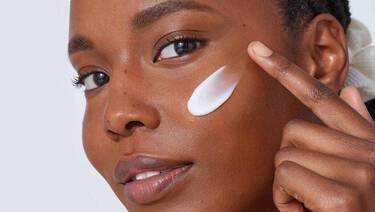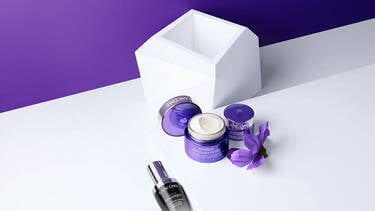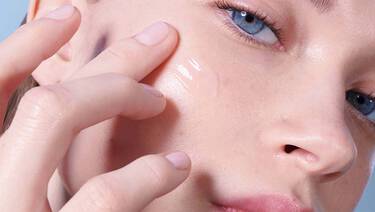How To Identify Your Skin Type: A Comprehensive Guide For Tailored Skincare

Understanding your skin type is the first step to achieving healthy, glowing skin. Whether dealing with dryness, oiliness, or a combination of both, determining your skin type allows you to choose products that work best for you. This guide will help you identify your skin type and offer tips on selecting skincare products tailored to your needs.
What Is a Skin Type?
Your skin type is determined by how much oil (or sebum) your skin produces and
how it reacts to environmental factors. Based on these characteristics, skin types can be broadly categorised, and
each type requires specific care. Genetics, age, climate, and lifestyle can also influence your skin type, but it's
primarily determined by the natural balance of oil and moisture in your skin.
By identifying your skin type, you can better understand the underlying issues and choose skincare products that
address your concerns effectively. Using the wrong products can exacerbate skin issues, so it’s essential to have a
clear understanding of what works best for your skin.
Different Skin Types
Here are the main skin types you may have:
1. Normal Skin
Normal skin is well-balanced, meaning it’s neither too oily nor too dry. People with normal skin usually have minimal blemishes, fine pores, and an even texture. Their skin doesn’t react negatively to most products, and they rarely experience breakouts or irritation.
2. Oily Skin
Oily skin is characterised by excess sebum production, leading to a shiny or greasy appearance, particularly in the T-zone (forehead, nose, and chin). People with oily skin are prone to enlarged pores, blackheads, and acne. They often need products that help regulate oil without over-drying the skin.
3. Dry Skin
Dry skin produces less sebum, resulting in tightness, flakiness, and a rough texture. This skin type lacks moisture and is prone to irritation, redness, and premature ageing. Hydrating products and gentle care are key for those with dry skin.
4. Combination Skin
Combination skin features both oily and dry areas. Typically, the T-zone is oily, while the cheeks are dry or normal. This skin type can be tricky to care for, as it requires products that balance hydration without increasing oiliness.
5. Sensitive Skin
Sensitive skin tends to react easily to external factors like harsh products, weather, or stress. It can be dry, oily, or a combination, but the common factor is its tendency to become red, itchy, or inflamed when exposed to certain triggers.
How To Identify Your Skin Type?
To accurately determine your skin type, follow these simple steps –
1. Wash Your Face: Start with a clean face by washing with a gentle face wash. This removes any dirt, makeup
products, or oils that may interfere with the results.
2. Wait For An Hour: After washing, don’t apply any products to your face. Give your skin an hour to return
to its
natural state. During this time, avoid touching your face or doing activities that make you sweat.
3. Observe Your Skin: After an hour, assess your skin based on these indicators –
- Normal Skin - Feels comfortable with no dry patches or excess shine
- Oily Skin - Appears shiny, especially in the T-zone, and may feel greasy to the touch
- Dry Skin - Feels tight, rough, or flaky, especially around the cheeks and forehead
- Combination Skin - Has an oily T-zone but dry or normal areas on the cheeks
- Sensitive Skin - May show signs of redness, itching, or irritation after cleansing
How To Choose Skincare Products Based On Skin Type?
Once you’ve identified your skin type, you can choose products that cater to
your specific needs.
1. Normal Skin: Look for gentle, well-balanced products that help maintain your skin's natural state. A basic
routine of cleansing, moisturising, and sun care is usually
enough.
2. Oily Skin: Opt for oil-free, non-comedogenic products that won’t clog pores. Foaming facial cleansers, lightweight moisturisers, and products containing salicylic
acid or niacinamide can help control oil and prevent breakouts.
3. Dry Skin: Hydration is key for dry skin. Choose creamy cleansers, rich creams, and hydrating face serums containing ingredients like
hyaluronic acid, glycerin, or ceramides to replenish moisture.
4. Combination Skin: Use lightweight, non-greasy moisturisers for the oily areas, and hydrating products for
the drier parts. Gel-based products can work well for combination skin, as they provide hydration without excess
oil.
5. Sensitive Skin: Opt for fragrance-free, hypoallergenic products. Calming ingredients like aloe vera,
chamomile, and oatmeal can soothe irritation and reduce redness.
How To Maintain Each Skin Type?
Maintaining healthy skin requires more than just using the right products – you
need a consistent routine tailored to your skin type. Here’s how to care for different skin types:
1. Normal Skin: Maintain your skin’s balance with regular cleansing, moisturising, and sun protection. Stick
to gentle, pH-balanced products to avoid disrupting your skin’s natural state.
2. Oily Skin: Focus on controlling oil production by using mattifying products and oil-free moisturisers.
Exfoliating regularly with gentle acids (like salicylic acid) can help keep pores clear and minimise excess shine.
3. Dry Skin: Use rich, emollient products to lock in moisture. Regularly exfoliate to remove dead skin cells
but be gentle to avoid irritation. Look for products containing shea butter, oils, and glycerin.
4. Combination Skin: Balance is key. Use a gentle cleanser and a mix of hydrating products for the dry areas
and oil-control products for the T-zone. A light, gel-based moisturiser can keep skin balanced without feeling
greasy.
5. Sensitive Skin: Stick to soothing, non-irritating products. Avoid harsh exfoliants, fragrances, or
alcohol-based products. Regularly moisturise to strengthen your skin’s barrier and protect it from external
irritants.
Identifying your skin type is the foundation of a successful skincare routine. By understanding your skin's unique needs, you can choose the right products, create a balanced regimen, and maintain healthy, glowing skin all year round. So, browse through a wide range of Lancôme skincare products and explore our skincare beauty magazine to keep your skin looking and feeling at its best. You can also head to the Lancôme E-Skin Expert tool to get personalised skincare solutions from the comfort of your home, without having to spend a penny.
FAQs
1. Can skin type change over time?
Yes, skin type can change due to various factors such as age, hormonal changes, climate, and even stress. For example, teenagers often have oilier skin due to hormonal fluctuations, but as they age, their skin may become drier. Seasonal changes can also impact your skin type – you might experience more oiliness in the summer and dryness in the winter.
2. How often should I assess my skin type?
It’s a good idea to assess your skin type every six months, especially if you notice changes in your skin’s behaviour. Factors like weather, diet, hormones, or new skincare products can alter your skin type, so keeping track helps ensure your routine is still effective.
3. Does diet affect my skin type?
Yes, your diet can influence your skin’s appearance. A diet high in processed foods, sugars, or dairy might lead to oily skin or acne, while a balanced diet rich in antioxidants, healthy fats, and hydration can help improve skin health and support your natural skin type.


















